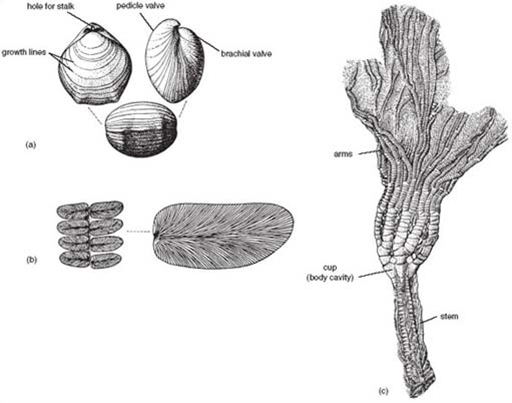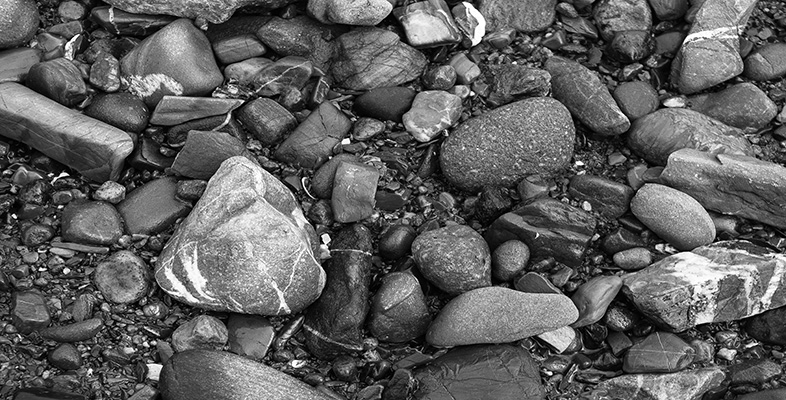1.4.5 Fossils and ancient environments
An essential component of any environment is the plant and animal life that is adapted to the prevailing conditions. Fossil plants and animals are therefore wonderful sources of information about ancient environments. Plants can leave behind remains ranging from roots, leaves and twigs to seeds and pollen. Leaves and twigs are relatively fragile, and require a comparatively low energy environment (e.g. the mudflats of an estuary) for their preservation. Seeds, pollen and spores are surprisingly robust, and are often the only parts of a plant to survive. Animals can be preserved in one of two ways – either by some part of their body remaining as a fossil, or by some trace, such as the animal's footprints preserved in a muddy sediment, becoming preserved as sedimentary rock (a trace fossil). Even dung can end up fossilised, the resultant fossils being known as coprolites.
Body fossils of animals include shells, skeletal frameworks, bones and teeth. We do not have room here to describe the most common fossil groups.
First of all, we have to consider the organism itself. Does it have any hard parts? If not, e.g. a jellyfish, then its chances of fossilisation are very low indeed. However, some soft-bodied organisms burrow into sediment, e.g. the lugworm that leaves the familiar worm casts on the shore, and at least there is the chance that their burrow becomes preserved as a trace fossil. An organism with a one-piece shell, such as a periwinkle or garden snail, stands a better chance of being preserved intact, than if its skeleton is made up of lots of pieces, like a sea urchin or crinoid (Figure 12c).

Activity 4
Which of the following is indicative of deposition in a high-energy environment, and which in a low-energy environment? (a) A sedimentary layer containing complete examples of thin fragile shells. (b) A sedimentary layer containing broken shell fragments.
Answer
For shells to be broken (example (b)) requires a high energy environment, whereas fragile shells can remain intact (example (a)) only if the speed of the transporting and depositing currents are low (i.e. a low energy environment).
Fossils of land-dwelling organisms (e.g. Figure 12b) indicate deposition in or at least near a terrestrial environment, whereas marine fossils indicate a marine environment suitable for the fossil organisms to have lived in (e.g. correct temperature range, light levels, salinity, water depth). This evidence can then be added to evidence from the features of sedimentary grains (Section 1.4.2) to help reconstruct the environment.
